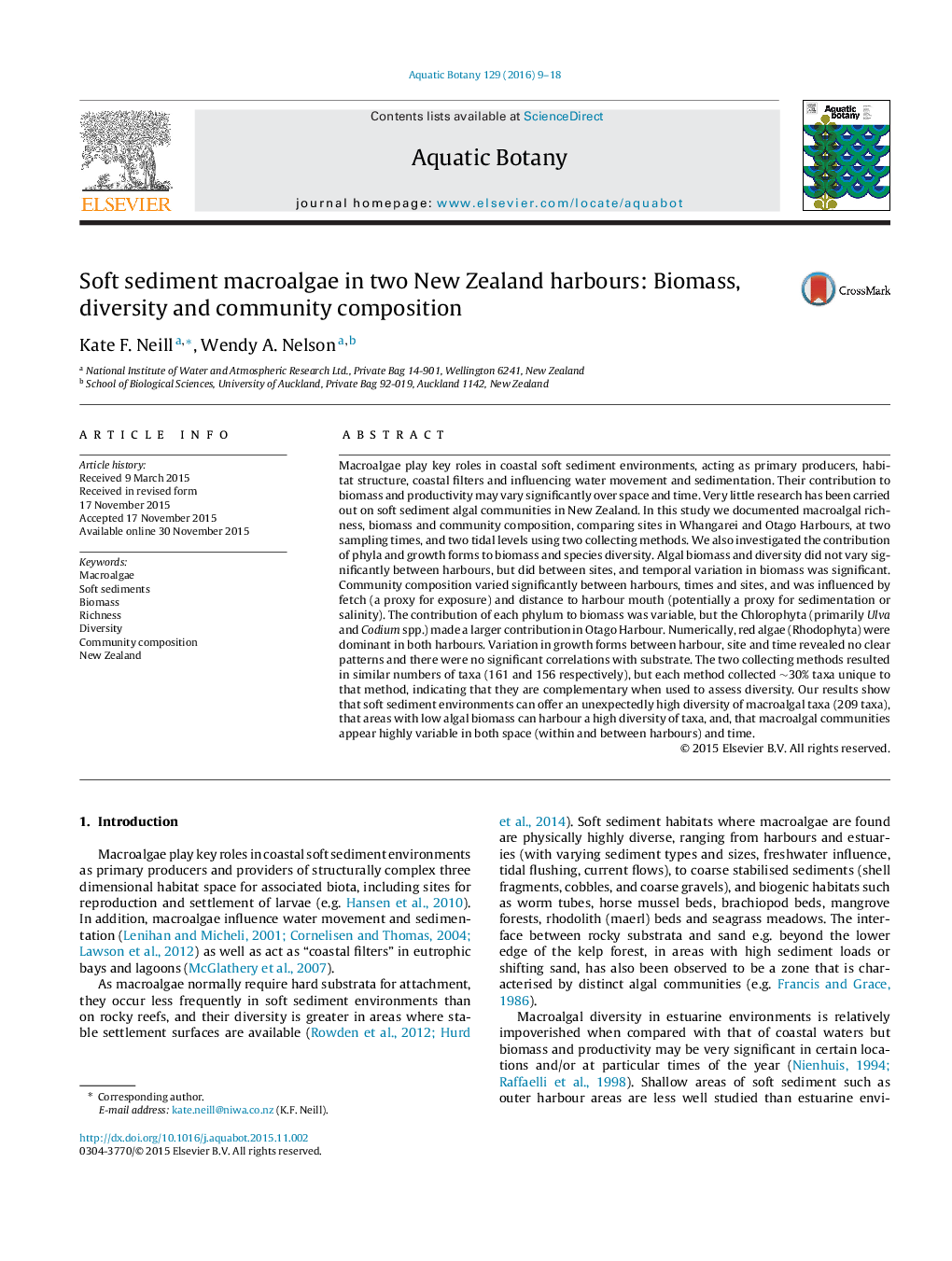| Article ID | Journal | Published Year | Pages | File Type |
|---|---|---|---|---|
| 4527615 | Aquatic Botany | 2016 | 10 Pages |
•High macroalgal diversity was found in soft sediment habitats in two harbours.•Community composition varied significantly between harbours, sites and times.•Areas with low algal biomass can harbour a high diversity of taxa.•Using two collection methods enabled more effective documentation of diversity.
Macroalgae play key roles in coastal soft sediment environments, acting as primary producers, habitat structure, coastal filters and influencing water movement and sedimentation. Their contribution to biomass and productivity may vary significantly over space and time. Very little research has been carried out on soft sediment algal communities in New Zealand. In this study we documented macroalgal richness, biomass and community composition, comparing sites in Whangarei and Otago Harbours, at two sampling times, and two tidal levels using two collecting methods. We also investigated the contribution of phyla and growth forms to biomass and species diversity. Algal biomass and diversity did not vary significantly between harbours, but did between sites, and temporal variation in biomass was significant. Community composition varied significantly between harbours, times and sites, and was influenced by fetch (a proxy for exposure) and distance to harbour mouth (potentially a proxy for sedimentation or salinity). The contribution of each phylum to biomass was variable, but the Chlorophyta (primarily Ulva and Codium spp.) made a larger contribution in Otago Harbour. Numerically, red algae (Rhodophyta) were dominant in both harbours. Variation in growth forms between harbour, site and time revealed no clear patterns and there were no significant correlations with substrate. The two collecting methods resulted in similar numbers of taxa (161 and 156 respectively), but each method collected ∼30% taxa unique to that method, indicating that they are complementary when used to assess diversity. Our results show that soft sediment environments can offer an unexpectedly high diversity of macroalgal taxa (209 taxa), that areas with low algal biomass can harbour a high diversity of taxa, and, that macroalgal communities appear highly variable in both space (within and between harbours) and time.
